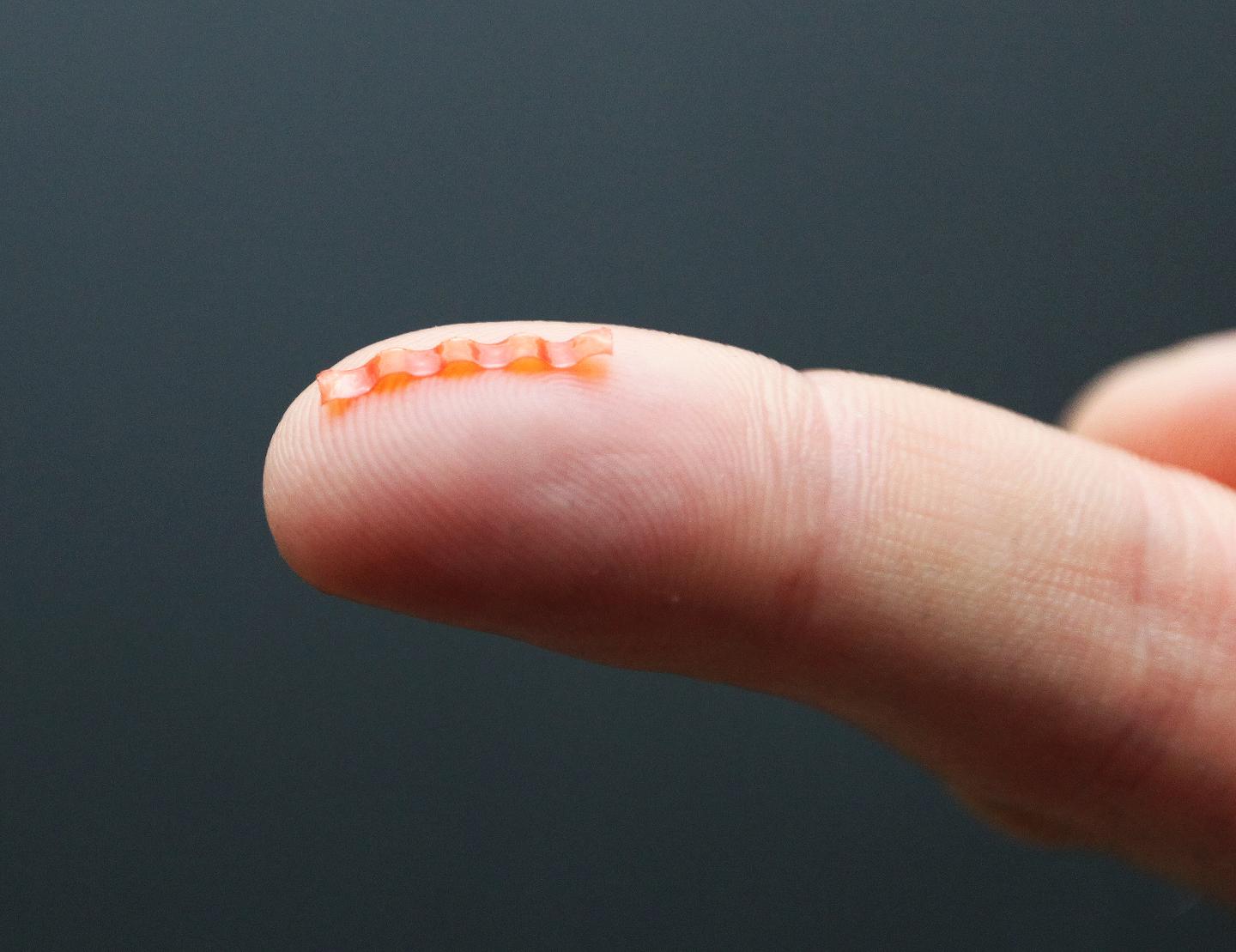The field of soft robotics is booming, with new technology being revealed all the time. Engineers are always trying to create robots that mirror the different modes of locomotion found in nature. Now, researchers from the University of Warsaw have demonstrated that their soft robotic caterpillar can mimic the movements of real caterpillars with the help of liquid crystal elastomer technology.

The 15-millimeter long soft robot is powered by green light and controlled by a spatially modulated laser beam. In addition to being able to travel along flat surfaces, it can also climb slopes, squeeze through narrow slits and transport loads.
While advancements are made relatively often in the field, creating soft robots tends to be limited due to difficulties in power management and remote control.
That’s when the researchers turned to Liquid Crystalline Elastomers (LCEs) — smart materials that can exhibit large shape change when illuminated by visible light. The techniques make it possible to pattern these soft materials into arbitrary three dimensional forms with a pre-defined actuation performance. The light-induced deformation allows a monolithic LCE structure to perform complex actions without numerous discrete actuators.
The University of Warsaw, along with colleagues from LESN (Italy) and Cambridge (UK), has now developed a natural-scale soft caterpillar robot with an opto-mechanical liquid crystalline elastomer monolithic design.
The robot’s body is made of a light sensitive elastomer stripe with patterned molecular alignment. Controlling the travelling deformation pattern allows the robot to walk up a slope, squeeze through a slit and push objects up to ten times its own mass, which makes it a good fit for future applications in challenging environments.
“Designing soft robots calls for a completely new paradigm in their mechanics, power supply and control. We are only beginning to learn from nature and shift our design approaches towards these that emerged in natural evolution,” said Piotr Wasylczyk, head of the Photonic Nanostructure Facility at the Faculty of Physics of the University of Warsaw, Poland, who led the project.
The researchers are hopeful that by rethinking materials, creations methods, and designs will open up new areas of soft robotics.


Comments are closed, but trackbacks and pingbacks are open.